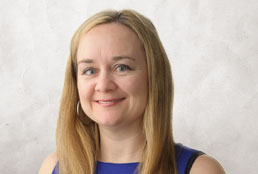Change is difficult for any organization, especially ones as complex and multi-faceted as a hospital. The Clinical & Systems Transformation (CST) Project, currently being implemented in many hospitals and residential care facilities around the province is a monumental change to how care is delivered and the processes behind that care.
Having a clear picture of how and why things happened during and after a change of this size can help organizations identify what is working well and what is not, so they can adapt to feedback and change course, if needed.
CST involves the design and implementation of a shared clinical information system and common clinical practices, workflows, and guidelines that are the same for each hospital within Vancouver Coastal Health, Provincial Health Services Authority, and Providence Health Care. The first sites went live in 2018 with Providence Health Care scheduled for November 16.

This system will consolidate patient data from over 50 current electronic systems and countless paper records into one common electronic health record. Each individual record will be updated automatically when patients see a health care provider, such as when they are prescribed a new medication or receive lab results.
Implementation of CST requires changes in how care providers find and add to information about their patients’ medical history and medications and requires use of an electronic system.
Dr. Beth Snow leads the team conducting the ongoing evaluation of the CST Project to identify the extent to which it achieved its goals and the reasons why certain outcomes are seen.“The ultimate objective of CST is to improve patient safety and the quality and consistency of care across sites,” explained Dr. Snow, the Program Head for Evaluation at CHÉOS.
To evaluate the outcomes of the implementation, Dr. Snow and her team rigorously record baseline data before sites go live with CST. This includes data from paper patient records as well as interviews with, and observations of, care providers.
The team then returns to the site after a few months to see what has changed.
“Having these different time points in our evaluation allows us to tell a complete story about the project,” said Dr. Snow “This includes both expected and unexpected outcomes, both good and bad.”
This can include metrics such as the percentage of orders that are placed using the computerized system or the proportion of a charts for which documentation was entered electronically rather than transcribed. But the evaluation can also identify unexpected barriers to using the CST system like physical space challenges in specific areas of the hospital.
The team also provides an online dashboard for each organization to allow them to see how things are going (Note: requires being on a health organization network) as well as official reports. This reporting helps both the hospital and implementation team to address the problems through things like professional education, modification of the CST system, and practice change.
“This information also helps other hospitals who have not started their roll out, to anticipate problems and make changes before the system goes live there,” added Dr. Snow.
The process of evaluation is constantly adapting and changing in order to put the information it gathers into context. The size and complexity of the CST Project, spanning multiple health organizations and municipalities, means that it would be easy to get off course without ongoing review.
“This is the first evaluation of this type and scope,” noted Dr. Snow “There have been smaller-scale changes of this type in other regions but none that have incorporated evaluation throughout the process.”
Dr. Snow and her team are in the final stages of baseline data collection at St. Paul’s and Mount Saint Joseph Hospitals. Dr. Snow will be sharing and discussing the results of the ongoing evaluation at the CHÉOS Work in Progress Seminar Series on October 23.



